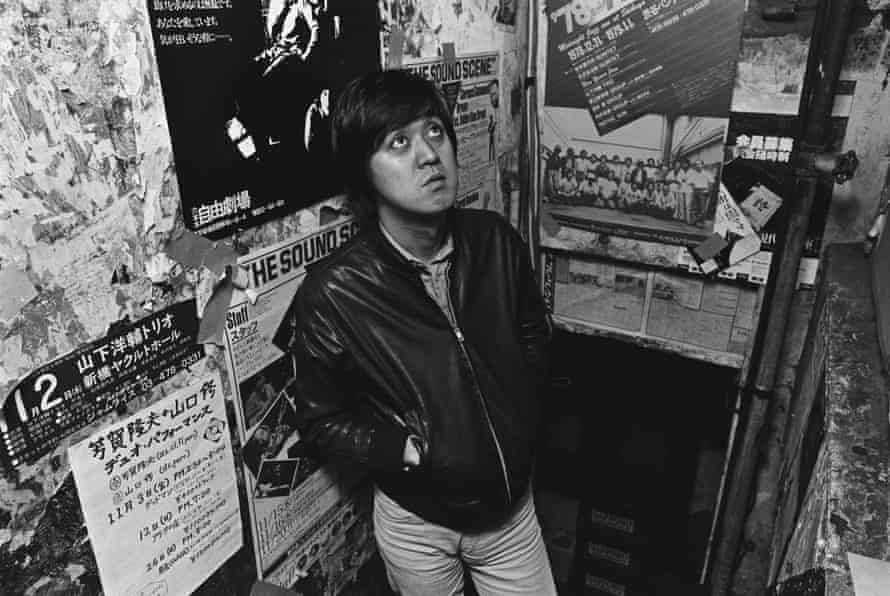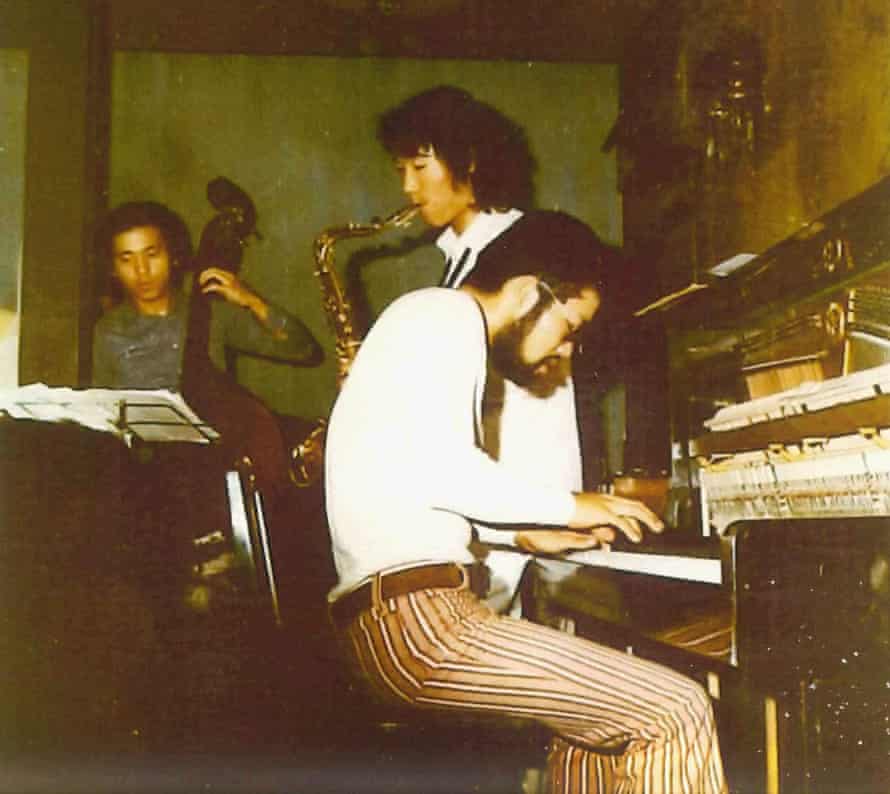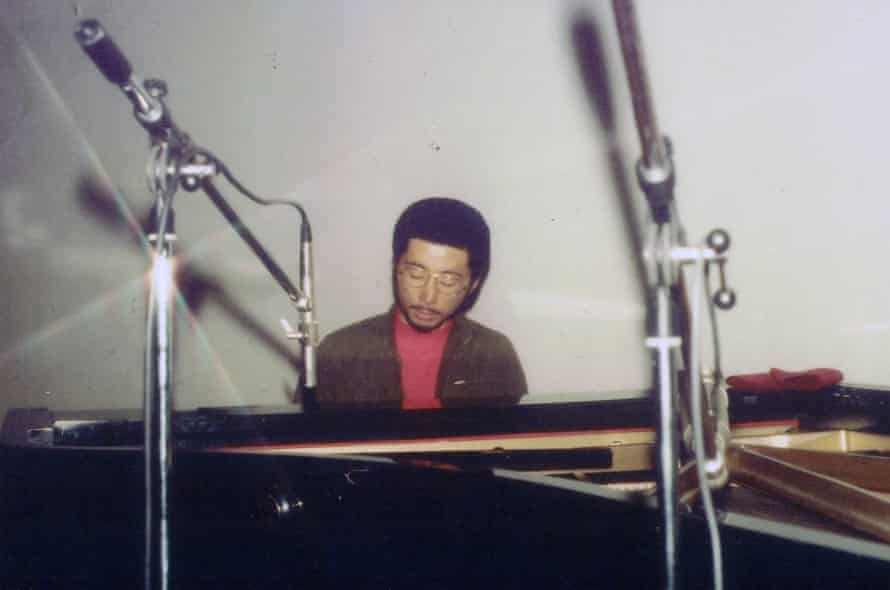So good... like you
Listeners:
Top listeners:
00:00
00:00
chevron_left
-
play_arrow
NGradio So good... like you
Featured photo: Pianist Toshiko Akiyoshi in 1958. She is still active today at the age of 92. Photograph: Everett Collection Historical/Alamy
Postwar Japan embraced the music of its former enemy – and, powered by anti-establishment feeling, remade it. As they find a new global audience, the country’s jazz innovators explain what drove them
The story of Japanese jazz is about music and a movement, but also a nation’s state of mind – a daring vision of a better future after the second world war, sounded out on piano, drums and brass.
Jazz is a distinctly American art form – the US’s greatest cultural achievement, in fact, along with hip-hop – and a healthy scene had formed in the 1920s and 30s as American players toured the clubs of Tokyo, Kobe and Osaka. But Japan had historically been an insular nation – its policy of sakoku, which for more than two centuries severely limited contact with the outside world, had only ended in the 1850s – and an increasingly nationalist government, feeling jazz diluted Japanese culture, began to crack down. By the second world war, “the music of the enemy” was outlawed.
After the country’s surrender, occupying forces oversaw sweeping reforms. American troops brought jazz records with them; Japanese musicians picked up work entertaining the troops. There was a proliferation of jazz kissa (cafes), a distinctly Japanese phenomenon where locals could sit and listen to records for as long as they wanted. For some, jazz was the sound of modernity.
In those early postwar years, Japanese musicians were essentially copying the Americans they admired. “That’s what you do,” says Tony Higgins, co-curator of the J Jazz reissues series. “You start off imitating and then you assimilate and then you innovate.”
Higgins and his fellow curator Mike Peden, both Britons, are longtime collectors who have spent vast quantities of time tracking down records, investigating labels and poring over obi strips (a band of paper wrapped around Japanese LPs). For the past few years, the pair have worked on Japanese jazz reissues for BBE Records, typically drawing from the late-1960s to the mid-80s, a period of fantastic innovation when a generation of musicians found their own voice. These releases have been part of a broader wave of Japanese jazz of the era reissued for western ears on labels such as Light in the Attic, Impex and We Release Jazz.

“It’s humbling that there’s a lot of people obsessed with this sort of music worldwide,” says saxophonist Koichi Matsukaze. Matsukaze’s 1976 album At the Room 427 is set to be reissued as part of the J Jazz Masterclass series this month, and follows the 2018 reissue of his classic Earth Mother, from 1978. “I am at an elder age and I’m still active in my music,” he adds. “All of this is my origins.”
“It’s humbling that there’s a lot of people obsessed with this sort of music worldwide,” says saxophonist Koichi Matsukaze. Matsukaze’s 1976 album At the Room 427 is set to be reissued as part of the J Jazz Masterclass series this month, and follows the 2018 reissue of his classic Earth Mother, from 1978. “I am at an elder age and I’m still active in my music,” he adds. “All of this is my origins.”
“You started to sense a drift away from the short-form hard-bop numbers into more open ended, free-form music – quite psychedelic actually,” explains Higgins. “They ditched the suits and just dressed how they wanted to dress. They are influenced by what Miles [Davis] is doing in his electric music, but they are writing more of their own material, improvising more.”
When asked if it was his intention to push the boundaries of Japanese jazz on his classic albums First and Mine – two projects released in 1970 that projected this new, uninhibited approach to the genre – saxophonist Kohsuke Mine says: “I did not think like that at all. I think we just recorded what came out naturally at the time.” Matsukaze, though, saw his music as actively rebelling against his musical forefathers.
“In Japan, there’s this elder and subordinate culture,” he explains. “In the music scene, there’s your superiors saying, ‘Oh you have to play Charlie Parker.’ I was, at the time, very young and still growing [musically]; there were student demonstrations and society in Japan was very volatile. That kind of spirit was in Japanese jazz as well. I was very anti-establishment. Some people would say, ‘You should play standards,’ but I hated doing that. I would rebel against that. At the time, I considered myself an outsider.”
Matsukaze’s music encapsulates the power and passion of the era. The title track from Earth Mother – full of melodic hooks, elastic baselines and zigzagging solos – kicked off the very first J Jazz compilation, and At the Room 427 goes further back in time. Matsukaze’s debut album was recorded live in November 1975 in front of a small audience in a classroom at Chuo University. On Little Drummer, Matsukaze and his small band intensely wrangle their instruments in a way that almost sounds like they’re dueling one another. It forms a thrilling, improvisational composition, like a blindfolded motorist on the highway putting their foot to the floor yet never crashing. He might have rejected expectations to play the classics, but Matsukaze distinguishes himself on the Billie Holiday classic Lover Man, as his slinking, sensual saxophone wails lead the band like a flaming torch.
The mid-1980s marks the end of the period covered in the J Jazz series. “For me, it becomes less interesting [after that], they’re playing MOR sort of stuff,” says Higgins. “The whole digital technology thing comes in. The sound of drums changes, keyboards change. There’s a general sonic tone, that sheen, across the music that appeals to me less.”

In the years since, Europe and the US have indulged in a decades-long fascination with Japanese culture that doesn’t appear to be subsiding. The popularity of anime is at an all-time high, while there’s been a new interest in the Japanese city pop genre of the late 1970s and 80s. Now, it’s Japanese jazz that’s ripe for excavation.
“Many of these albums were hardly accessible outside Japan back then,” explains Stephan Armleder of We Release Jazz, but the arrival of the internet “gave us this insane access to a gigantic archival database for music: blogs, message boards, YouTube, Discogs”.
Putting together a reissue is not a straightforward business, with rights holders that need tracking down and dust blown off decades-old contracts: it took two years for Peden and Higgins to secure the licensing to every song on the first volume of J Jazz. But it’s worth it for the acts of preservation, like the Tohru Aizawa Quartet’s album Tachibana, reissued in 2018. Higgins believes only about 200 copies were ever pressed and many of those were used by the man who funded the project – the Tachibana of the title – as a kind of business card to promote his hotels. It’s easy to envision such a record becoming lost in time.
Another classic that found a new life online is Ryo Fukui’s album Scenery: one posting of the 1976 LP, uploaded in 2015, has almost 12 million YouTube plays. The pianist’s playing is smooth and nuanced as he navigates American classics like It Could Happen to You. “Now I just need to become the kind of person that hosts sophisticated dinner parties,” wrote one commenter on YouTube.
“I’m astounded that all these young jazz fans across the world found out and really liked Ryo Fukui’s music,” says his widow, Yasuko Fukui, speaking to me from her jazz club Slowboat, which she ran with Ryo until his death in 2016. “I’m sincerely happy that this is happening.”
Living in the northern city of Sapporo, Fukui was focused on sharpening his craft when a director from Trio Records happened to catch a live performance by the Ryo Fukui Trio while on a business trip. “Initially Ryo didn’t think his skills were good enough to be recorded, so he didn’t say yes quickly,” says Yasuko. “But the director was persistent.” Fukui followed it up one year later with the album Mellow Dream, but spent the rest of his life recording only sporadically. He focused on running the Slowboat club in Sapporo, where he’d perform as many as four times a week. Eventually, fans who knew his work from YouTube began showing up at the club.

Fukui died in 2016. Two years later, Scenery was repressed on vinyl by We Released Jazz. “Ryo Fukui embodies, for us, the magic of Japanese jazz,” says Armleder. “He combines a true respect for tradition and the history of jazz with a dedication to perfecting his skills, and adds his own flair and passion.”
The popularity of rediscoveries like this means the price of original Japanese jazz pressings has gone through the roof. Higgins, one of the chief figures driving that interest, says that nowadays he couldn’t afford to build his personal collection, though I point out the flipside is that the value of his collection has skyrocketed. “That’s one of the reasons we want to reissue them,” he says of rising costs. “It’s nice to have an original copy, but I’ve never subscribed to the idea of sitting in a jazz bunker clutching my originals. I want people to hear them.”
These reissues might be pressed on brand new vinyl, but between the grooves, you still feel change happening. It’s the sound of catharsis for these musicians, for whom no boundary was above testing.
With thanks to Kensuke Hidaka for acting as translator.
Source: theguardian.com
Written by: New Generation Radio
Similar posts
ΔΗΜΟΦΙΛΗ ΑΡΘΡΑ
COPYRIGHT 2020. NGRADIO





















Post comments (0)